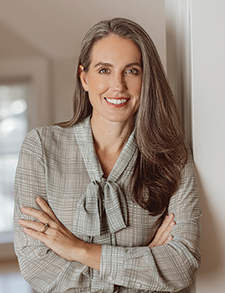 “Don’t call Mark!” Those were my words to my mom when I was in labor with our daughter. My husband, Mark, was still in fellowship training at the time, and the paternal leave policy was seven days. If you left early during the day, the seven-day clock started. Therefore, I called him at 5 p.m., had a crash C-section later that day, spent the required three days in the hospital, and then we had four days at home together. So many have similar stories. Looking back at this now, it seems crazy, but at the time it seemed normal, and I was grateful that he got any time off at all. After all, four days was better than three or none.
“Don’t call Mark!” Those were my words to my mom when I was in labor with our daughter. My husband, Mark, was still in fellowship training at the time, and the paternal leave policy was seven days. If you left early during the day, the seven-day clock started. Therefore, I called him at 5 p.m., had a crash C-section later that day, spent the required three days in the hospital, and then we had four days at home together. So many have similar stories. Looking back at this now, it seems crazy, but at the time it seemed normal, and I was grateful that he got any time off at all. After all, four days was better than three or none.
Explore This Issue
December 2024The world has changed over the past 20 years, and now it is more common for new moms and dads to have several months of paid time off from work, but this is far from the norm in healthcare. Since 2020, most federal employees have had access to 12 weeks of parental leave, and some executives have recognized the recruiting and retention impact of these programs. In the U.S., however, only 27% of private sector employees have paid family leave despite the growing expectation from younger generations for two-worker households and shared parenting.
Parental leave policies that include both parents regardless of gender and caregiver status make a cultural statement on the importance of family bonding during the early days of parenthood, provide financial security for families, increase maternal and infant health and well-being, and have the potential to improve gender equity in the workplace. Parental leave is in addition to paid medical leave that covers time for a woman bearing a child. Healthcare leaders who have started family leave programs feel that paid leave policies have made members of their practice group feel more supported and part of a work family that cares not only about their revenue generation but also their overall health and well-being, improving retention and workplace satisfaction.
Parental leave policies are not without their complications. How are they funded, who is included, who covers the workload, and what are the expectations for work engagement while on leave? What structural and cultural changes should be considered for a successful paid leave policy?
- Culture: Create a culture and systems that allow people to take time without actual or perceived harm to their careers and their patients.
- Plan ahead: Create slack and identify the staffing and financial needs in advance to cover the workload and cost of paid leave.
- Not only for new parents: Consider the needs of our community without children or those who have already had their child. How can paid leave policies add value for all individuals and allow needed time for family and self-care?
Paid leave cares for the entire person and may combat the growing pandemic of burnout and loss of autonomy. Our field has come a long way just in the past five years in recognizing the value add of parental leave to organizations, but there’s still work to be done to understand and harness the transformation potential of paid leave. —Robin